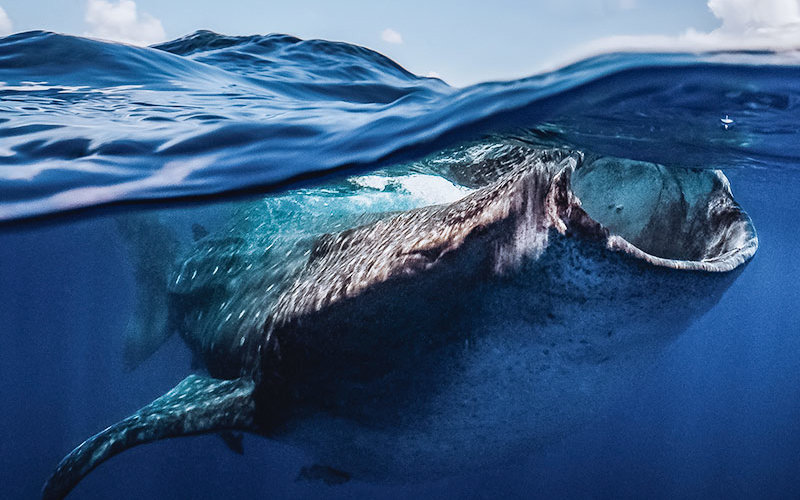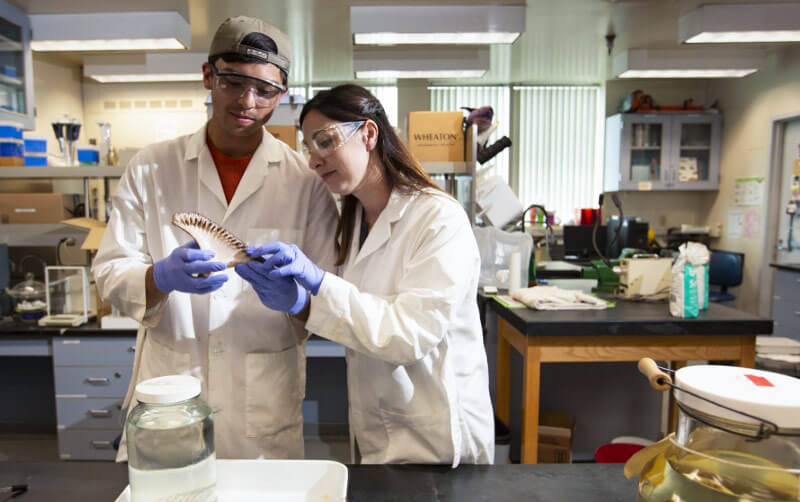
The whale shark, the world’s largest fish, is named for its enormous size and shares a filter-feeding lifestyle similar to whales, which are mammals. This docile ocean giant has a very big mouth and swims with it wide open to feed on tiny plankton and small fishes that move over filter pads, separating the food from the water.
Whale shark mouths contain hundreds of rows of tiny teeth and 20 filter pads that are used to eat and allow water to pass through, while capturing food particles.
To give insight into the morphology — the function and development — of the whale shark and how this fish feeds, marine biology student Jacob Javier documented the biological structures in baby and adult whale sharks to understand their filtration with hopes of making a biologically-inspired filter.
“This research allows us to study the whale shark’s biological structures in more depth and to produce artificial filter-feeding models to better understand their properties,” Javier said.
Javier’s research could lead to developing “bio-inspired” filters for use in industry, such as in water treatment or beer distillation.
“By testing the filtration properties, we would better understand how and why whale sharks feed the way they do. This could also be important for conservation efforts that involve studying the fish’s food sources,” said Javier, who is on track to graduate in August and earn a bachelor’s degree in biological science-marine biology.
Javier works in the lab of Misty Paig-Tran, assistant professor of biological science, and is a scholar in the university’s Southern California Ecosystems Research Program (SCERP). The program gives undergraduates opportunities to perform independent research in ecology and environmental biology to prepare for graduate school. William “Bill” Hoese, professor of biological science, and Jennifer Burnaford, associate professor of biological science, direct the program.
Javier and the other Class of 2020 SCERP scholars presented their research projects during a recent virtual showcase.

Paig-Tran’s research focuses on an integrative approach that combines engineering and physics techniques to study the biology of marine organisms to create bio-inspired applications, such as filters. In her 2018 published research, she described her discovery of a unique, non-clogging filtration system in manta rays, which she coined “ricochet separation.”
What excites Javier about this research project is its interdisciplinary nature, in which he uses concepts from biology and mechanical engineering. The project also challenged him to learn new skills, such as image processing and computer programming language to calculate water turbulence when the whale shark feeds and to create a geometric model of the whale shark’s mouth to make 3D-printed models.
To create the geometric model of the whale shark’s mouth cavity, he recalled lessons in high school geometry. “I had to develop a mathematical process to figure out the area and dimensions of a whale shark’s filter pad,” he said.
Javier’s study is ongoing, with SCERP scholar and biological science major Julia Teeple set to take over the project this summer. Teeple will create 3D-printed filters based on his work, including adding other mouth structures that might affect flow, such as the whale shark’s more than 300 tiny teeth.
“Jacob did a great job tackling the anatomy of neonatal whale sharks in comparison to the adults,” Paig-Tran said. “Our next step is to run the models created from actual whale shark specimens by inserting them into a custom-built whale shark mouth feeding on different types of plankton.
“We can now begin to answer two questions using the models generated from Jacob’s research: How does a whale shark filter work? And, do the teeth structures help to guide water toward the filter?”
During his undergraduate education, Javier was involved in campus student organizations and programs, including serving as a peer adviser for Project RAISE. He also was a member of the professional biology fraternity Beta Psi Omega and the College of Natural Sciences and Mathematics’ Inter-Club Council. Javier, who plans on a career in marine biology, credits his SCERP faculty mentors and Paig-Tran for giving him “one of the best experiences of my life.”
“One of the most valuable benefits of doing research is working closely with faculty that truly care about student development. They were not there to teach so much, but rather to allow me to discover,” he said.
Contact: Debra Cano Ramos, dcanoramos@fullerton.edu